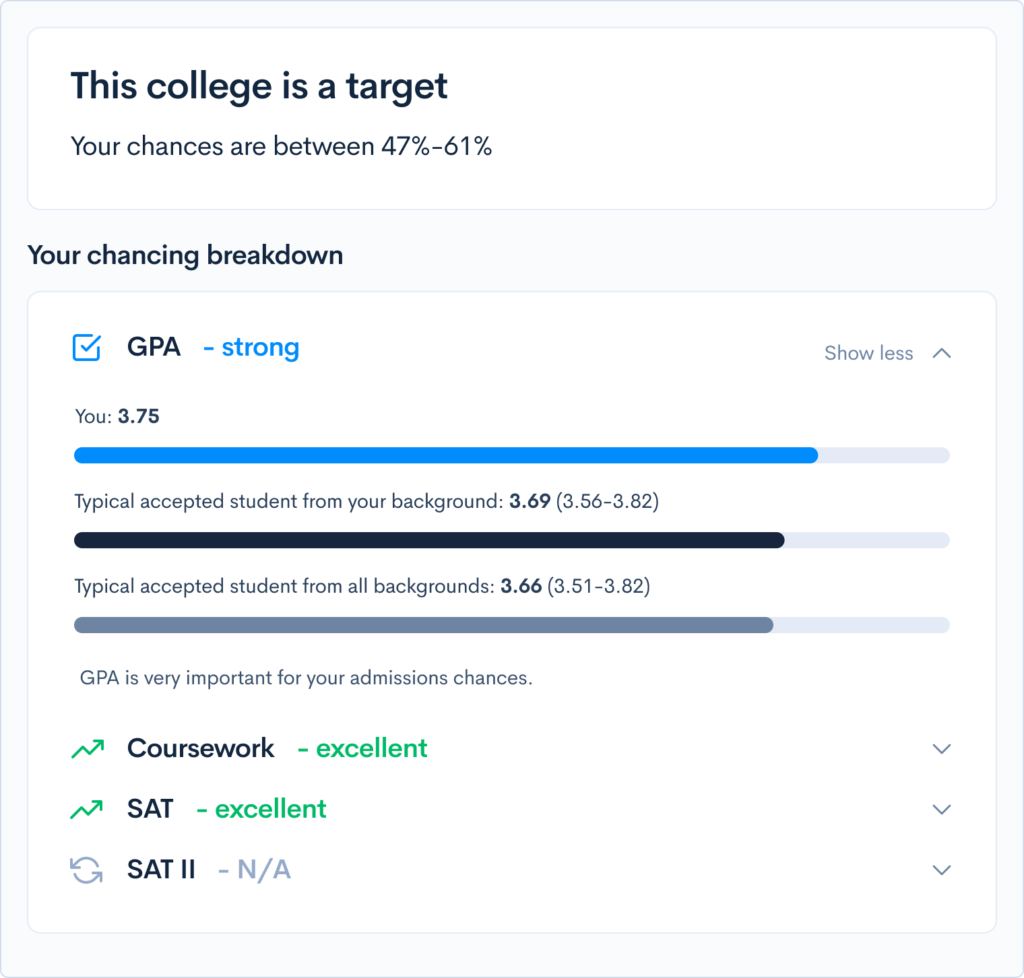Guide to the SUNY Schools + Complete List
The SUNY schools are a public university system in the state of New York (SUNY stands for “State University of New York”). It’s the largest comprehensive school system in the country and spans community colleges, universities, and graduate schools. For New York residents, this network of schools offers a quality education for a fraction of the price you might pay to attend a private institution. In this post, we’ll go over the unique aspects of the SUNY system and the admissions stats for the SUNY schools. The SUNY schools offer a wide variety of majors and programs with over 7,000 degree and certificate programs. Of the 64 SUNY schools, 25 offer 4-year bachelor degree programs. We’ll be focusing on these 25 schools in this post. SUNY colleges vary in size, from schools like SUNY Maritime with 1,500 students to Stony Brook University with 17,500 students, but most SUNYs are on the smaller side. Located both in rural and urban areas, the SUNYs span across New York State. Some SUNYs like the Fashion Institute of Technology are highly specialized, if you are looking to enter a specific field like fashion. Finally, there are five statutory colleges, which are schools that receive funding from the state but are run by private colleges. These are located at Cornell University and at Alfred University. A big benefit of attending a SUNY school is that they are more affordable than attending a private university, especially if you live in New York. The typical in-state tuition for baccalaureate programs is $7,070 and the tuition for out-of-state students is $16,980 for the 2020-2021 school year. 1. Decide which SUNY schools you want to apply to. You can apply to multiple campuses using a single application. 2. Create an account with applySUNY and fill out the general application. Many SUNY schools are also on the Common App; if you’re already using the Common App for other schools, feel free to continue using it to save time. 3. Pay the application fee. There’s a $50 fee for each campus you select. 4. After you submit your application, print and give the School Counselor Form to your high school counselor to complete. If you’re using the Common App, your counselor will already be able to fill out this info online. 5. Submit any supplemental applications. Some campuses require or recommend a supplemental application, which may include an essay question. If you’re using the Common App, the supplemental questions will likely be part of the application. 6. Consider applying to SUNY’s Educational Opportunity Program (EOP), that provides access, academic support and financial aid. You can indicate your interest on the regular SUNY application. Note: you cannot apply early decision and to the EOP program. There is no official deadline for applying regular decision. However, we recommend you apply in the fall months because applications are reviewed on a rolling basis. Once a program is full, no more applications will be accepted. Early decision is binding for SUNY schools but only only a handful offer this option: Environmental Science and Forestry (ESF) (December 1), Geneseo (November 15), Maritime (November 1). Early Action is a non-binding early application program for fall freshman. The deadline is November 15. If accepted, you must finalize your enrollment by May 1. The following schools offer early action: School Location Acceptance Rate Enrollment Albany 52% 13,500 Southeast of Buffalo 63% 3,700 Binghamton 40% 14,000 Near Rochester 53% 7,000 Buffalo 80% 8,339 Buffalo and Amherst 61% 8,000 North of the Adirondack Foothills 78% 3,200 West of Albany 77% 2,200 South of Syracuse 44% 6,200 West of Albany 64% 3,100 Onsite Locations Across NYS 63% 9,095 Syracuse 61% 1,800 Long Island 55% 9,916 Southwest of Buffalo 76% 4,400 Finger Lakes Region 65% 5,500 Throggs Neck Peninsula 72% 1,500 Center of NYS 72% 2,900 Hudson River Valley 45% 6,807 Long Island 78% 4,700 West of Albany 51% 6,000 NW of Syracuse 54% 7,000 Lake Champlain 54% 5,200 North of Adirondack Foothills 64% 3,200 Harrison 65% 4,100 Long Island 42% 17,500 Utica and Albany 65% 2,200 As you can see, the SUNY schools are diverse in size and location. They also differ in the types of academic programs they offer. Some are more competitive than others, with Binghamton and Stony Brook as the most prestigious. To better understand your chances of acceptance, try out our free admissions calculator. After creating a profile, input your grades, test scores, and extracurriculars, and we’ll estimate your odds of acceptance. This tool will help you create a school list and define your college admissions strategy. What’s Covered:
What Are the SUNY Schools?
Aside from the 4-year colleges, some SUNYs offer 2-year programs like Erie Community College, Nassau Community College, and Finger Lakes Community College. The SUNY system also includes upper division colleges, which are schools you can transfer to as a junior or senior, if you were previously at a community college. For example, SUNY Upstate Medical University and SUNY Downstate Medical Center give students this option. How to Apply to the SUNY Schools
Deadlines

List of the SUNY Schools with Baccalaureate Programs
What Are Your Chances of Acceptance?


